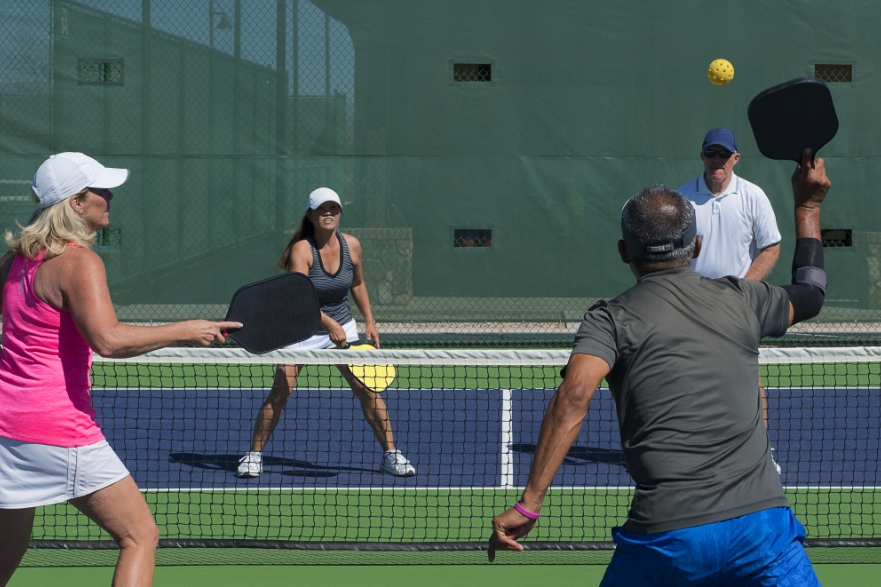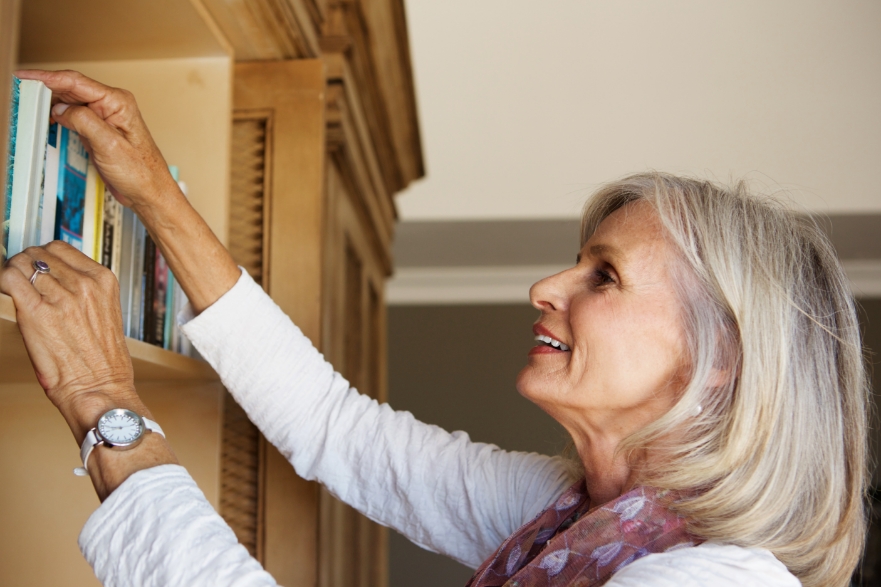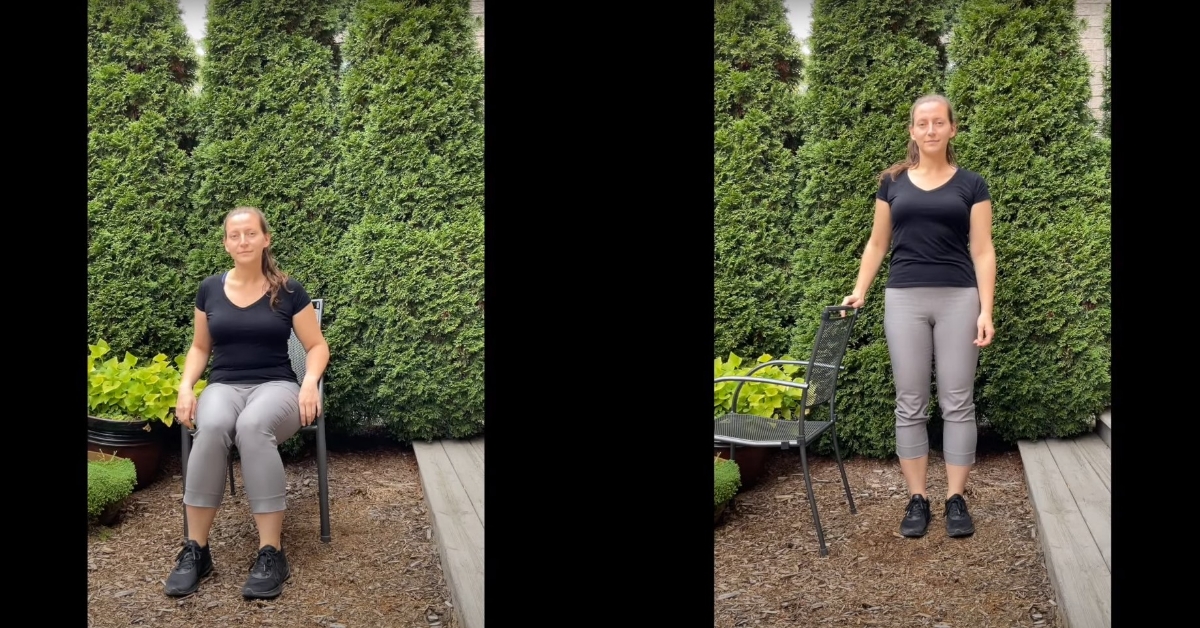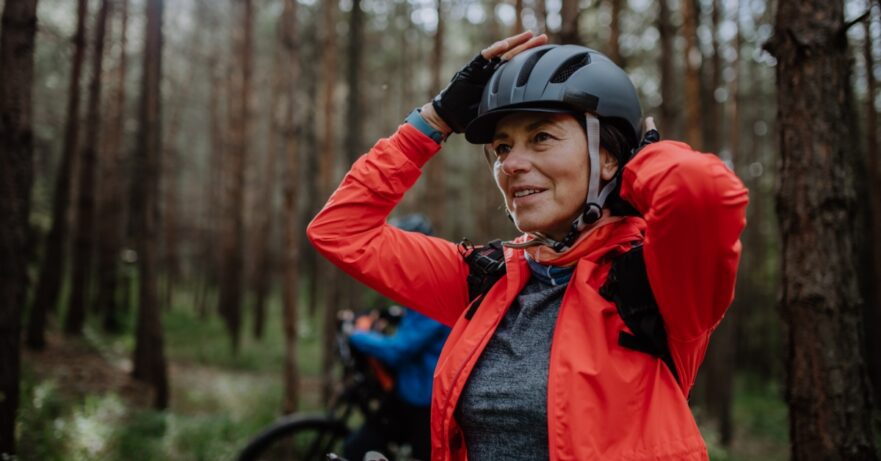We’re here to help you get well and stay well.
Find physiotherapy, massage, chiropractic care or acupuncture near you.
Find a Clinic
Virtual Care
Receive care from the comfort of your home
We continue to offer a range of services through Virtual Care, including Physiotherapy, Chiropractic Care, Occupational Therapy, Hand Therapy and more. Using secure, video conference technology, you can connect one-on-one with a pt Health clinician from the comfort of your own home. Learn more

Latest Blogs
April 29, 2024Sports PhysiotherapyNote:You should consult a healthcare professional before starting this or any exercise program to make sure the movements are right for your needs.
A great way to improve in-game performance is to strengthen your body. When it comes to racquet sports or golf, exercise can be a great tool to improve your game while reducing the likelihood of overuse injuries.
Developing upper body strength
Racquet sports and golf usually demand upper body strength, with some power and speed to get the ball where it needs to go. These sports add repetitive stress on your shoulders, elbows, forearms, wrists and hands. Racquet sports and golf also require rotational force to increase power and distance by using your abdominal muscles as the initial driving force. Therefore, ensure your abdominal muscles are engaged and stabilized during the following exercises.
Below are a few exercises that can help improve your racquet sport or golf game:
1. Banded chest flies with elbow bent
Tie an elastic behind you at waist level.
Hold the elastic tightly, with the palm facing forward. Your arm is horizontal beside you, with your elbow slightly bent.
With your shoulders down and back, pull the elastic in front of you while keeping your elbow slightly bent and without moving the torso.
Slowly return to the initial position and repeat.
Complete 2-3 sets of 8-10 repetitions each side.
2. Elevated shoulder external rotation
Stand and tie an elastic in front of you at shoulder level.
Hold the end of the elastic, bend your elbow to 90 degrees, and lift your arm out to the side to 90 degrees.
Pull the top of your shoulder backwards while you rotate your forearm upwards, keeping your elbow bent.
Slowly return to the initial position and repeat.
Complete 2 sets of 8-10 repetitions each side.
3. Shoulder diagonals
Stand up straight with an elastic strap beneath your foot and hold the ends of it in the opposite hand.
With your palm facing the floor and your elbow straight, lift and turn your hand up and across your body in a diagonal motion so as to end up with your upper arm next to your ear.
Lower your hand slowly back down to its original position.
Complete 2-3 sets of 8-10 repetitions each side.
4. Wood choppers
Stand next to a pulley station or affix a band to your side above shoulder height. The pulley should be set to start from the highest point.
Hold the handle/end of band with both hands at face height.
Pull the cable down and sideways across your body, rotating the shoulders and hips.
Complete 2-3 sets of 8-10 repetitions each direction.
5. Pallof press
Hold an elastic band in your hands and attach it on the side at chest height.
With tension in the elastic, extend your arms forward and then slowly bring your hands back toward your body.
Your body must not rotate as you resist the pull of the elastic. Complete 2-3 sets of 8-10 repetitions each side.
6. Wrist flexion
Place your forearm on an armrest or table, with your wrist hanging over the edge and your palm facing up.
With a weight in your hand, lift the hand towards the ceiling.
Lower slowly and repeat.
Complete 2 sets of 8-10 repetitions each side.
7. Wrist extension
Place your forearm on an armrest or table, with your wrist hanging over the edge and your palm facing down.
With a weight in your hand, lift the hand towards the ceiling.
Lower slowly and repeat.
Complete 2 sets of 8-10 repetitions each side.
If you require more instructions or if you’re dealing with an overuse injury, find a clinic near you or book online. Our clinicians are here to help you get well and stay well so you can enjoy your favourite activities.
This blog post originally appeared on lifemark.ca and was written by Joanna Ellingson, Kinesiologist at Lifemark Meadowlark Centre. [...]
April 29, 2024PhysiotherapyNeck hump or hunchback are terms used for a condition properly called kyphosis. This postural change, which results in the appearance of a hump at the base of the neck can be uncomfortable, cause pain and affect overall physical functioning.
Poor posture is the main cause, (think “text neck” or forward head posture) and leads to weakness and elongation of the muscles in the upper back and the front of the neck and tightness or shortening of the muscles of the chest and back of neck. Other contributing factors can include osteoporosis, degenerative changes in the spine, obesity, or other underlying health or medical conditions.
Over time, this condition can contribute to back, neck or shoulder pain, stiffness in the upper back and shoulders, tightness in the back of the thighs (hamstrings), headaches, or fatigue. If severe enough, individuals may experience acid reflux, trouble swallowing, or issues with breathing. Others may even experience reduced mobility and ability to engage in everyday activities such as getting up from sitting, reaching an elevated shelf, and walking.
Prevention is key to maintaining a healthy posture. Performing postural exercises is a great way to help maintain proper posture. Equally important is being aware of your posture when using electronic devices, doing desk work, and while driving.
If the condition has developed, correcting your posture, along with doing the proper exercises, may help gradually reduce its prominence and the effects of associated symptoms.
Check out these exercises to help prevent or reduce the condition:
1. Chin tuck
Stand or sit up tall. Focus on an object at eye level while slowly moving your head back over your shoulders and tuck your chin in. Gently guide the movement with your hand on your chin. Hold for 3 seconds then relax and return to the initial position. Repeat 5-10 times, 3 times per day.
2. Shoulder blade squeeze
In sitting or standing, tuck your chin in slightly and keep your spine tall. With your arms relaxed by your side squeeze your shoulder blades back, down and together. Hold for 3 seconds then relax and return to the initial position. Repeat 5-10 times, 3 times per day.
3. Chest stretch in doorway
Stand in a doorway with your forearms on each side of the door with your elbows at shoulder height and bent to 90 degrees. Position your feet in a stride stance, one foot in front of the other, shoulder width apart. Slowly step through the doorway keeping your chest upright until you feel a gentle pulling sensation in the chest. Hold the stretch position for 30-60 seconds while focusing on relaxing your body and continuing to breathe in a relaxed manner. Repeat 3-5 times, 3 times per day.
4. Wall angels
Stand or sit on the floor with your back and buttocks against the wall. Position your shoulders and elbows in a 90-degree bend and place your head (chin in), shoulders, elbows and wrists against the wall or as close to the wall as you can. Keeping as much of the body as possible in contact with the wall, slowly slide your arms upward along the wall. Breath normally during movement and slowly return to the initial position. Repeat 10-15 times, 1-3 times per day.
A Lifemark clinician can help
To schedule an appointment, contact a pt Health clinic near you or book an appointment online.
This blog originally appeared on Lifemark.ca and was written by Krista McIntyre, Reg. PT., M.Sc.PT., H.B.K., National Director of Program Development, Specialty Services. [...]
April 27, 2024PhysiotherapyWhen Mrs. A.* was diagnosed with frozen shoulder, she was in so much pain that she struggled to reach the top shelves of her bookcase to grab her favourite books. Frozen shoulder is a painful condition that can severely restrict movement of the shoulder. Simple activities such as washing, dressing, walking the dog, reaching the top shelf for a cup, or even brushing your hair can become difficult and painful. It is caused by swelling and scar tissue that build up around the joint and reduce movement. It is more common in women between the ages of 40-70, particularly with a history of diabetes or thyroid problems. For Mrs. A., it was the lack of movement over a long period of time that caused her frozen shoulder.
Mrs. A.’s frozen shoulder developed over time as this type of injury often goes through three distinct phases: 1. Freezing stage: Mrs. A. experienced sharp pain especially when moving the affected shoulder in certain directions. She also noticed the gradual stiffening of her shoulder joint. This phase can last 3-6 months. 2. Frozen stage: During this time, Mrs. A. noticed that while her pain had reduced, movement is still extremely limited. This phase can last up to 12 months. 3. Thawing stage: As the pain continued to subside, Mrs. A.’s movement began to return. She did experience some lingering shoulder weakness, that is extremely common due to lack of use in the first two stages. This phase can last 12-24 months. While there is no ‘cure’ for frozen shoulder, motion is lotion! It is vital to maintain as much movement as possible. Mrs. A.’s treatment involved consistent, yet gentle progressive stretching program; making sure to remain within her pain tolerance level.
Do you relate to Mrs. A.? If you are experiencing similar shoulder symptoms, it is important to have it looked at by a trained heath care practitioner to help guide you and work with you for the best results. Physiotherapists and other health care practitioners can assess and identify the stage you are in. They can then provide you with pain management treatments and create an individualized rehabilitation program for your shoulder. There is research that suggests there is a 10% increase in risk of developing frozen shoulder on the opposite side once you have had on one side. Therefore, it is important to increase strength and continue movement in both shoulders as well.
*Names in this article have been changed.
Mrs. A’s shoulder continues to heal, and she can now easily reach the top shelf to grab her favourite books.
If you require more instructions or if you’re dealing with an overuse injury, find a clinic near you or book online. Our clinicians are here to help you get well and stay well so you can enjoy your favourite activities.
Note: This blog article was originally posted on Active Physio Works, a division of Lifemark and was written by Christine Christianson.
[...]
March 18, 2024PhysiotherapyDid you know that migraines don’t always present with head pain? A migraine can trigger many different sensations depending on the part of the brain that is being affected. Approximately 30% of migraine sufferers experience vestibular migraine, with symptoms of dizziness, vertigo or imbalance during their attacks. Even between attacks, those with vestibular migraine can have slightly decreased balance and sensitivity to head movement and visual stimulation. Vestibular migraine is becoming recognized as one of the most common causes of episodic dizziness. However, because a headache may not be present at all, this diagnosis is often overlooked by the medical community.
Vestibular migraine is diagnosed when:
A person has had at least 5 episodes of vestibular symptoms of moderate or severe intensity, lasting 5 minutes to 72 hours (vestibular symptoms would include things like vertigo, dizziness with head motion, unsteadiness);
At least half of the episodes have one or more of the following: headache, visual disturbance (aura), and intolerance to light or sound;
There is a current or history of migraines; and
Symptoms are not more appropriately explained by another vestibular diagnosis
How are vestibular migraines managed?
Treatment of vestibular migraines is like any other type of migraine – typically a combination of dietary and lifestyle modifications to reduce the occurrence of migraines, and/or medication.
One of the most challenging parts of living with migraine is the unpredictability of when one might occur, but often people have more control than they think. The trigger for a migraine is seldom one thing, so it can be helpful to think of it like a threshold, or a combination of factors that must build up to set off a migraine. For example, people may feel helpless because their migraines can be triggered by changes in the weather which they have no way of controlling. However, by taking steps to reduce factors they can control (eating regularly, staying hydrated, good sleep routine, exercising, etc.), they can increase the threshold for triggering a migraine.
Vestibular rehabilitation can be helpful for those with vestibular migraine who have mild residual symptoms of imbalance or sensitivity to head movement or visual stimulation between attacks. Vestibular rehabilitation is a proven therapy where specific individualized techniques are used to help the brain to compensate for problems in the vestibular system, or where maneuvers are done to correct mechanical dysfunctions in the vestibular part of the inner ear. Most vestibular therapists are specially trained physiotherapists, and as such, they can check for neck dysfunctions which may also contribute to migraine triggers.
If you require more instructions or if you’re dealing with an overuse injury, find a clinic near you or book online. Our clinicians are here to help you get well and stay well so you can enjoy your favourite activities.
This blog post originally appeared on lifemark.ca and was written by Sheelah Woodhouse, PT, BScPT, Vestibular Physiotherapist. [...]
December 18, 2023Occupational TherapyIs someone you know struggling with their mental health? It can be difficult, scary, and stressful when someone you care about is dealing with a mental health problem. You might be wondering how you can support them. We often know what to do when they get the flu or a cold, but what can be done for a mental health concern?
Well, let’s get down to the importance of mental health support for friends or family members. Families can be complicated, and connections will vary. Some people may have a strong bond with their families – spending quality time with each other every day. Other families however, may be more distant due to different circumstances and may not live close to each other or spend much time together.
When someone is struggling with a mental health problem, supporting them can make all the difference in their recovery, so it’s important that you show your love and support in any way you can. Often, talking about mental health can feel uncomfortable and is easier said them done. Supporting someone who care about may involve recognizing when they are feeling emotionally unwell, having caring and supportive conversations, and help when you can. This can also include offering to help them find a qualified mental health professional.
The holidays can be challenging
The holidays can sometimes bring on feelings of stress, anxiety and/or depression. Feeling financial burdens due to holiday expenses like travel, gifting or even hosting a gathering for example, can contribute to these feelings. Feeling overwhelmed can also take away from the time someone reserves for self-care and can increase the difficulty of balancing and organizing everyday responsibilities.
The holidays can also be a time of happiness and joy, but it’s important to recognize if you or someone you know is having a hard time. The signs aren’t always easy to spot, but here are some of the more common ones:
Feelings of hopelessness, worthlessness, guilt and / or sadness.
Increased frustration, anxiety, irritability or restlessness.
Loss of interest in most hobbies or activities.
Difficulty sleeping or oversleeping.
Tiredness, decreased appetite and lack of energy.
Fixation on past failures.
Trouble concentrating, focusing, or thinking.
6 tips that may help
Acknowledging your feelings, do not force yourself to be happy just because it’s the holiday season.
Mindfulness activities (meditation, reading, yoga practices) can help you focus on the present.
Staying active, like walking outside or putting some time away for an enjoyable activity.
Set realistic goals around the holiday season, don’t overextend yourself.
Seek help, talk to someone you trust about what is bothering you.
Remember you are NOT alone if you are having a hard time, the holidays can be difficult times for many. [...]
December 18, 2023Mental Health / Occupational TherapyThe holiday season is here and there can be a lot of planning for the season underway! It can be easy to lose track of the self-care activities in which we engage throughout the rest of the year that keep us healthy and happy. Here are some tips to consider to improve your self-care this holiday season:
1. Keep up the exercise
Often times during the holidays, people will skip their normal exercise routines including walking. This results in losing a very potent stress reliever. Rather than skipping workouts all together, I would encourage people to simply scale back if they find that they don’t feel like doing their regular workout routine.
Engaging in physical activity is something I recommend to every client I work with because it helps improve mood, concentration, and even sleep.
Research has shown that regular exercise (lasting at least 10 minutes per day) triggers the release of serotonin and dopamine in the brain (the same hormones that are targeted by anti-depressant medications), which can buffer against stress, anxiety, and depression. A morning walk is a powerful tool in your toolbox!
2. Respect and protect your sleep
Few things can have as much positive impact on physical and mental health as much as restorative sleep. A good sleep can help us feel recharged, energetic, and motivated. During the holidays, people may disrupt their sleep schedule to stay up later than usual. Here are three things that you can do to make sure your sleep is protected and as restful as possible:
Cut back on the caffeine and sugar for at least four hours before bed. These are stimulants that can keep you awake. Try a herbal tea or unsweetened carbonated water!
Skip the naps, especially the ones after large meals, so that you’re more tired at bedtime. If you do nap, limit the nap to no more than 30 minutes and in the earlier part of the day.
Pass on the goodies and leftovers in the fridge for at least three hours before bed so that you’re not kept awake by heartburn, indigestion, or sugar headaches.
3. Practice gratitude
Gratitude is another activity that can improve our reactions to stressful situations and to be more receptive to the good things around us. Research has demonstrated that even pondering the question, “what am I grateful for?” can increase levels of dopamine and serotonin in the brain, even when you can’t think of an answer.
Practicing gratitude can be as simple as reviewing what you are grateful for each day. This can be done mentally, or through the use of a simple gratitude journal (app-based or good old-fashioned paper-and-pencil) where you write down the actions, activities, people, or memories for which you are grateful
You can ask your friends, family, and children what they are grateful for and share in the gratitude of others.What a gift to share!
4. Make space for difficult feelings
The holidays can often be difficult times for many people. If you notice yourself repeating unhelpful habits, try to take a step back to make sense of what’s going on. The more you try to make sense of and confront your emotions, the less scary they can become. This makes it easier to sit with those difficult emotions.
5. Enjoy the present moment
One thing that can improve our enjoyment of the holidays is being present for the moments happening all around us. Noticing the small things right in front of us can allow us to feel grounded and present and improve our enjoyment of the holidays.
Do what you are doing when you are doing it! Notice the wandering mind, non-judgmentally and return to the present moment. A good deep breath can help us press the “reset button” on the moment.
Remember to take it easy and allow yourself the space to open up and enjoy each moment as it happens. Don’t forget to share some smiles and laughs over that video chat with family or friends, and savor every bite of that holiday meal.
If you are experiencing anxiety and are having a difficult time, we have occupational therapists, psychologists, psychotherapists, counsellors and social workers that can help.
To schedule an appointment, contact a pt Health clinic near you or book an appointment online.
This blog originally appeared on Lifemark.ca and was written by Rob Tyndall. [...]
November 22, 2023Physiotherapy / Vestibular RehabilitationIt’s always a good time to take a step back and review your home environment to lower your risk of injury. Though you can’t prevent ice and snow from coming this winter, you can be pro-active and take steps to prevent falls at home or around the house.
Numerous factors can increase your risk of falling. Conditions such as inactivity, heart problems, stroke, reduced hearing, vision or balance, muscle weakness, Parkinson’s, are some medical risks while improper footwear, poor lighting, loose rugs or clutter are environmental risks. That being said, a little pre-planning and some simple solutions can make a huge difference.
Safety tips for your home
One in three Canadian seniors experience a fall each year, and about half of these occur at home. Falls usually occur while doing a normal, daily task such as getting in and out of bed or getting into the bathtub.
Falls are the leading cause of injury and hospitalization among seniors and can result in physical injuries such as bruises, fractures or even a brain injury that significantly reduce quality of life.
Balance problems can increase the risk of experiencing a fall. Balance requires input from many areas: your visual system, the balance system of the inner ear as well as sensors of position and movement in your feet and legs, so if one or more of these systems are damaged as a result of injury or disease, the risk of experiencing a fall increases.
Home safety checklist
Remove loose carpets, area rugs and mats
Clean up spills when they occur
Remove clutter
Secure power cords away from floors
Choose anti-slip flooring, especially for stairs
Install and use handrails on stairs and in the bathroom
Ensure all areas are well-lit, especially stairs and doorways
Use footwear that fits (with non-slips soles) and avoid shoes without backs
Review the side-effects of medications with your physician or pharmacist, especially those that may lead to falls (e.g. dizziness)
Follow the recommendations of your medical professionals regarding the use of walkers or canes
Keep a cell phone with you or get a personal emergency response system
Staying safe around the house
You should also be preparing for balance challenges that will come along with the cold weather.
Here are three simple tips to prevent falls around the house this winter:
1 – Pick up some anti-slip traction aid like Lava Grip or Traction Sand from your local hardware store. Sprinkle the product on areas that will become icy when the temperature drops.
2 – Buy some heavy duty grips (i.e. ICEtrekkers) from your local sporting goods store to put on your boots for those winter walks. Just make sure to remove them before stepping on hard indoor surfaces, which they can slide on!
3 – Install motion sensor lights so that you’re not caught trying to navigate to your door in the dark as days grow shorter.
If you’re feeling unsteady or having some “close calls” with falls, you should talk to a healthcare professional. Vestibular therapists at Lifemark can evaluate contributing factors, measure your balance and determine your fall risk. They can then teach you techniques that have been proven to reduce fall risk and work with you to monitor progress.
To schedule an appointment, contact a pt Health clinic near you or book an appointment online.
This blog originally appeared on Lifemark.ca and was written by Sheelah Woodhouse, PT, BScPT, Vestibular Physiotherapist. [...]
November 22, 2023Occupational Therapy
As we approach the holiday season, consider these 7 suggestions to help you get ready for the holiday season:
7 suggestions to help you get ready for the holidays
1. Participate in a gift exchange
Instead of buying multiple gifts for multiple people, arrange a secret santa or yankee swap. Suggesting a gift exchange where family members or friend’s names are placed into a hat and each person picks one name to buy a gift for is a perfect way to keep spending simple. This way you can find that one perfect gift. Placing a spending limit on the cost of this gift is also a great way to keep expenses reasonable.
2. Shop early
This allows time for you to shop around for the perfect gift and find the best deals! You can also plan your meals for the holiday season and start purchasing non-perishables or frozen items ahead of time. Watching for sales and giving yourself time can save you time and money!
3. Pinterest is your friend
Nothing says “someone is special” than a unique, homemade holiday gift! There are a lot of fun (and affordable) holiday gift ideas that can be found on the internet. When you are out shopping, browse the internet before your purchase. There are often easy instructions to recreate that store bought idea.
4. Don’t be afraid to set a budget
It is important to know what your budget for the holiday season is, and to stay within it.
5. Make a plan and be organized
Make a list of all of the gifts that you are buying, and keep track of sales and coupons so that you can take advantage of deals as they arise. This can apply to home decor, party supplies, and holiday food. Using a spreadsheet can help you organize your gifts, receipts and finances effectively in one place. Keeping track of how much you spend on the holidays can assist you with budgeting for the following year.
6. Instead of a holiday party, enjoy a holiday hike
Hiking or participating in a winter activity is a great way to appreciate the fresh air and company of friends and family. A quick outdoor hike is often easier to plan than a big holiday party. Read our blog on winter activities for some fun suggestions.
7. Connect with others
A nice chat with a friend while drinking a cup of delicious hot chocolate is the perfect way to celebrate the holidays. If you’re still concerned about seeing a large group of people in person, it is also a great way to socialize virtually.
To schedule an appointment, contact a pt Health clinic near you or book an appointment online.
This blog originally appeared on Lifemark.ca and was written by Debra Vieth-Morse, B.Sc. O.T. Reg. (N.S.), Occupational Therapist. [...]
November 21, 2023Exercises / Physiotherapy / Stretches
Note: If you have not been physically active or have any questions, check with your primary healthcare provider before starting a new activity program. If you feel dizzy or unwell while exercising, stop and rest before continuing. If the situation does not improve, consult a healthcare professional before continuing.
An aerobic activity routine can have several benefits to your health and wellbeing. If you’re older, an aerobic activity routine can also help prevent falls. Falls are the most common injury in older Canadians and one of the leading causes of hospitalizations related to injuries in seniors. 85% of senior injury related complications are due to falls. Fear of falling can lead to decreased physical activity that can increase the risk of falls. The good news is you can increase your physical activity with aerobic activity.
What is aerobic activity?
Aerobic activity is any activity that gets your heart pumping and you breathing heavier. Some common examples include brisk walking, cycling, swimming and running or jogging. However, anything you do that gets your heart rate and breathing rate up is considered aerobic activity. Everyday examples are dancing, either alone or with a partner, gardening – raking leaves, shoveling snow, cross-country skiing, household chores, and vacuuming.
Keeping your body strong by using your muscles, (so you don’t lose them) while working on coordination and endurance with aerobic activity can help you prevent falls. The best part is you don’t need equipment and you can do aerobic activity indoors within your home if the weather conditions are not the best.
Why should we do aerobic activities?
Aerobic activity has many benefits. Here are some of them:
Physical benefits:
Increased lung, heart health and endurance in sedentary seniors
Decreased long-term inflammation in the body that is associated with chronic disease progression such as diabetes, arthritis and heart disease
Decreased blood pressure
Improved sleep
Mental wellness benefits:
Improved mood and mental health (decreased depression-like symptoms)
Thinking process benefits:
Improved working memory
Improved problem solving
You want to do aerobic activity, now what?
When doing these activities, it is important to have a warm-up to get your muscles ready for work to prevent injuries and a cool down to support recovery of your heart and lungs. A warm-up can be as simple as a 2-5-minute walk or march (see the example in the video or image below) A cool-down should include deep breathing to promote relaxation and stretches of major muscle groups (see the stretch examples in the video or image below). When engaging in aerobic activities it is important to consider safety.
The video gives you two options for performing activities; sitting and standing. Feel free to alternate between them as needed and as you are comfortable. Make sure to have a clutter-free space to do your exercises and you should use the back of a chair or a steady counter or wall to help with balance as you exercise.
Example warm-up
Total time: 2 minutes
Slowly march on the spot for 30 seconds
March slowly while lifting your arms up one at a time for 30 seconds
March while lifting your arms out to the side one at a time for 30 seconds
Alternate fast and slow marching in 5 second intervals for 30 seconds
Example cool down
Total time: 2 minutes
Stretches (hold each for 15-30 seconds), take deep breaths to help with relaxation
Arm across chest stretch for 15s on each arm
Triceps stretch for 15 seconds on each arm
Quad stretch for 15 seconds on each leg
Sitting hamstring stretch for 15 seconds on each leg
Exercise guidelines
When starting an aerobic activity program, consider the FITT principle; Frequency, Intensity, Type and Time. In terms of frequency, you should start slow and do aerobic activity 2-3 times a week, working your way up to 5-7 times a week. When exercising, you want to work at an intensity where you can talk (carry on a bit of a conversation). If you can sing you can work a little harder and if you are gasping for breath you should tone down your effort a bit.
You can also measure how hard you think you are working with the modified borg scale. Types of aerobic activities can be anything that get your heart pumping and your breathing rate up – be creative! The time spent doing aerobic activity will vary. Canadian guidelines for physical activity recommend that adults aim for 150 minutes of total of moderate to vigorous physical activity a week. You can start slowly with a 10 minute session and gradually build up to 25 or 20 or 30 minute sessions. Remember slow progress is still progress. In this case, slow consistent progress is what you want to aim for.
If you have any specific concerns or questions physiotherapists and kinesiologists can help. As experts in movement, they are knowledgeable about exercising and can help with any modifications or concerns about exercising with injuries.
To schedule an appointment, contact a pt Health clinic near you or book an appointment online.
This blog originally appeared on Lifemark.ca and was written by Ann Szczepanski, a Physiotherapy student from the University of Toronto. [...]
October 19, 2023concussion / Occupational TherapyLifemark registered physiotherapists Janine Ankenmann and Cregg Webber discussed how to identify concussions, myths around management, and steps to return to learning, home or work activities in a free webinar.
Over half a million Canadians sustain one or more concussions each year, the majority of which result from falls and motor vehicle accidents (not sport). Resulting from a direct hit to the head or jolting of any part of the body that causes the head to move back and forth rapidly, a concussion can greatly affect a person’s ability to engage in everyday activities, including school, work and home.
Below are five key takeaways from this session. To learn more please view the webinar above.
1. No two concussions are the same.
Concussions take on a variety of forms and can differ from injury to injury and person to person. Symptoms can be grouped into buckets based on the body system or function involved such as cognitive function, psychological and emotional conditions, sleep dysfunction, neck-related, vision-related, vestibular and balance challenges, and autonomic nervous system involvement, which includes blood pressure, and heart rate and breathing changes among several other subconscious body functions. Some people may experience drastic changes in emotions or moods or feel like they may have a breakdown and don’t know why. Others may feel off balance, dizzy, or have difficulty driving. Concussions can cause a variety of symptoms which differ in type and severity for everyone. A thorough assessment of the individual is necessary to best guide treatment, education, and modifications for activity.
2. Tools like the CRT 6 can help you identify whether a concussion has happened, what symptoms to watch out for, and when to call an ambulance.
The Concussion Recognition Tool 6 (CRT 6) was developed as an awareness tool that anyone can use for identification of concussions in children, adolescents, and adults, and immediate management of the injury. The CRT 6 red flag symptoms are observable signs after an injury that indicate immediate referral for urgent medical care. The tool also highlights visual clues that may suggest a concussion has happened, and questions to ask an injured individual to assess their awareness.
3. Early assessment with a knowledgeable health care provider is a predictor of good outcomes.
It is important to get assessed right away after an injury or if a concussion is suspected. The first 48 hours (about two days) after injury is when the brain is in its most vulnerable state. Early assessment and treatment provide education on how to safely engage the brain while modifying activity. Early care from a Lifemark clinician may look like introducing manual therapies dependent on symptom types or modifying activities of daily living to reduce the sense of overwhelm. By dispelling any fears around the injury, proactive assessment and intervention is the best way to promote recovery by setting an individual up on the right path to manage their symptoms and achieve health goals.
4. Safe recovery involves gradual increases in activity as symptoms improve.
Whether returning to school, work, or other daily activities, small and gradual increments of pre-injury activities should be introduced. For instance, return-to-learn may initially involve just listening, taking regular breaks, and spending time with others to avoid isolation. Return-to-work may involve working part time and gradually increasing work related tasks and in-office days. These activities may cause some aggravation of symptoms, but they shouldn’t worsen by more than 2 points on a 10-point scale and any increases of symptoms should not last more than 1 hour.
5. Length of recovery depends on many factors.
While the vast majority of people experience a resolution of their symptoms within 30 days following a concussion, the actual time it takes to recover depends on a variety of factors. The presence of any pre-existing conditions such as migraines, or a learning disability, may lengthen recovery time. Increasing age also increases recovery time. Adolescents heal faster than people in their 20-30s, who heal faster than those who are over the age of 65.
The greatest control an individual has over their own concussion recovery is an active involvement in their recovery journey. By sticking to the treatment plan, modifying tasks while monitoring symptoms, and gradually reintroducing activities, patients can support and achieve their health goals.
Predictors of a positive recovery from a concussion injury include early recognition, immediate removal from activity, early access to care, appropriate and timely education, and time limited (48 hours) active rest followed by gradual resumption of pre-injury activity.
If you or a loved one has sustained a concussion and would benefit from knowledgeable care, check out our locations page to find a clinic near you or book online with a concussion-focused clinician here.
This blog originally appeared on Lifemark.ca and was written by Krista McIntyre, Reg. PT., M.Sc.PT., H.B.K., National Director of Program Development, Specialty Services.
. [...]









